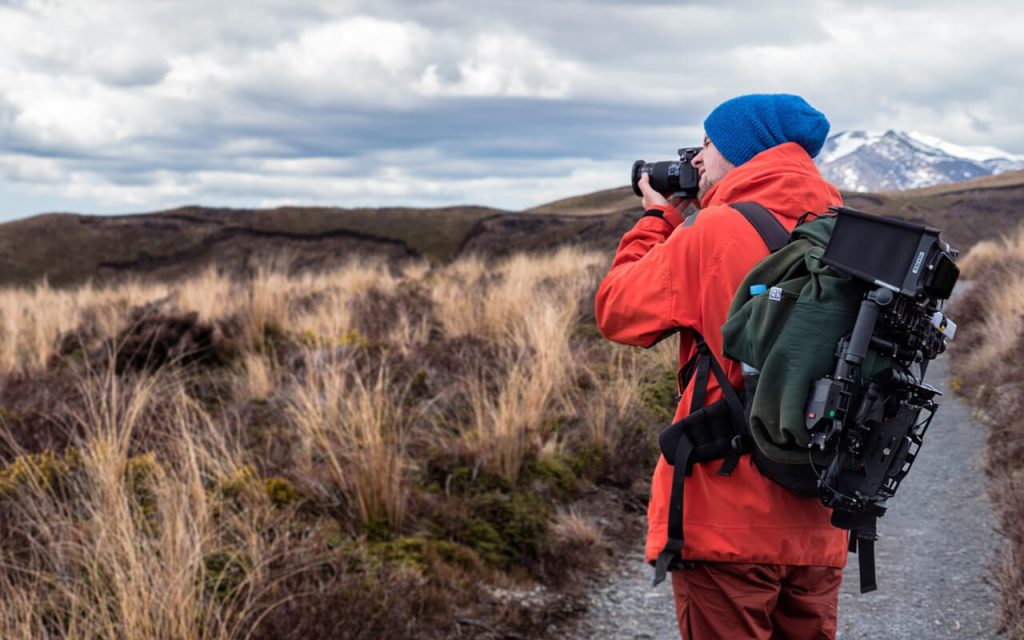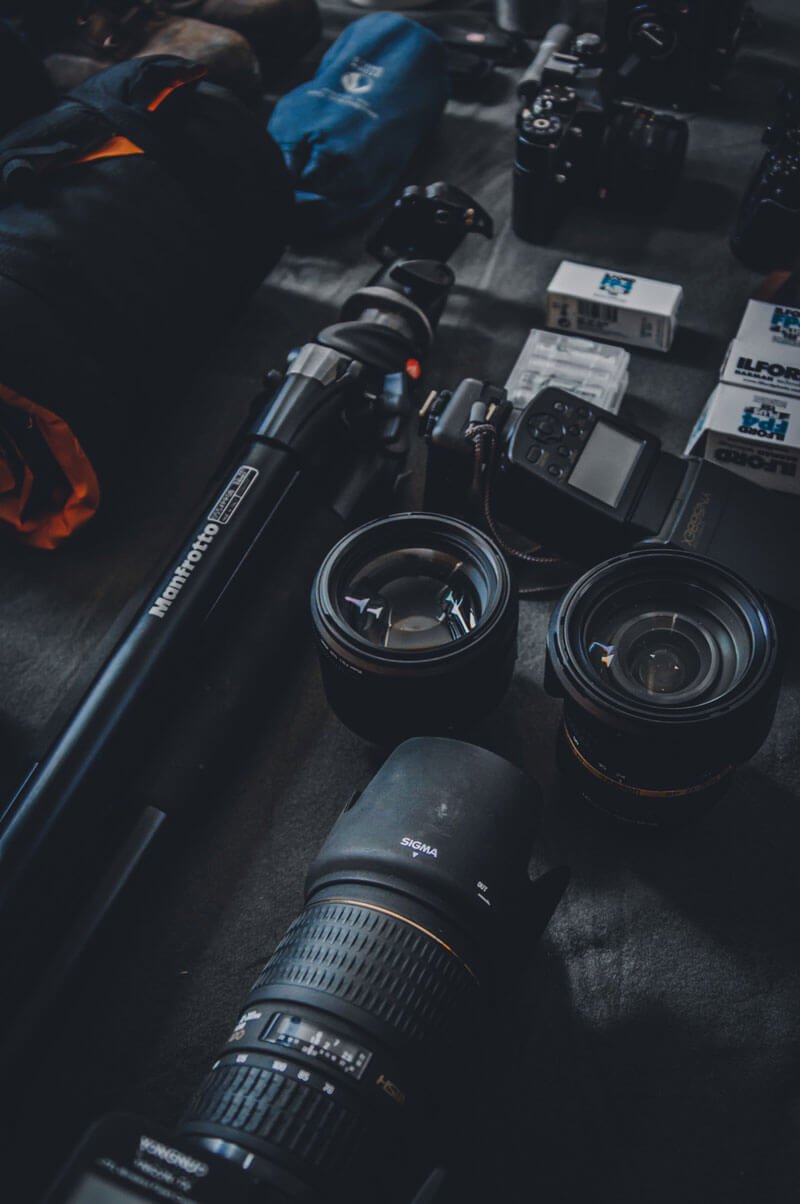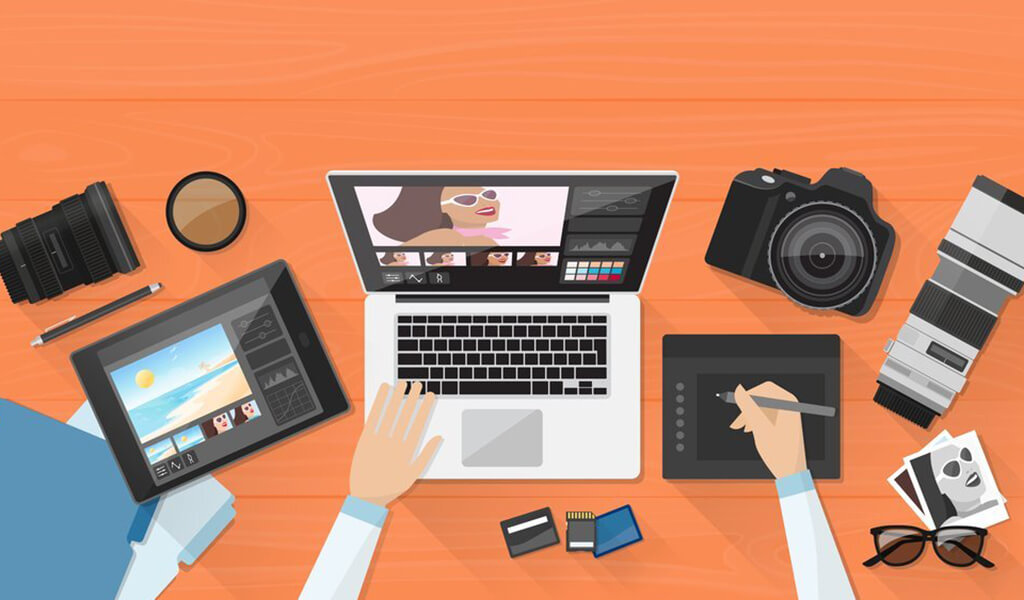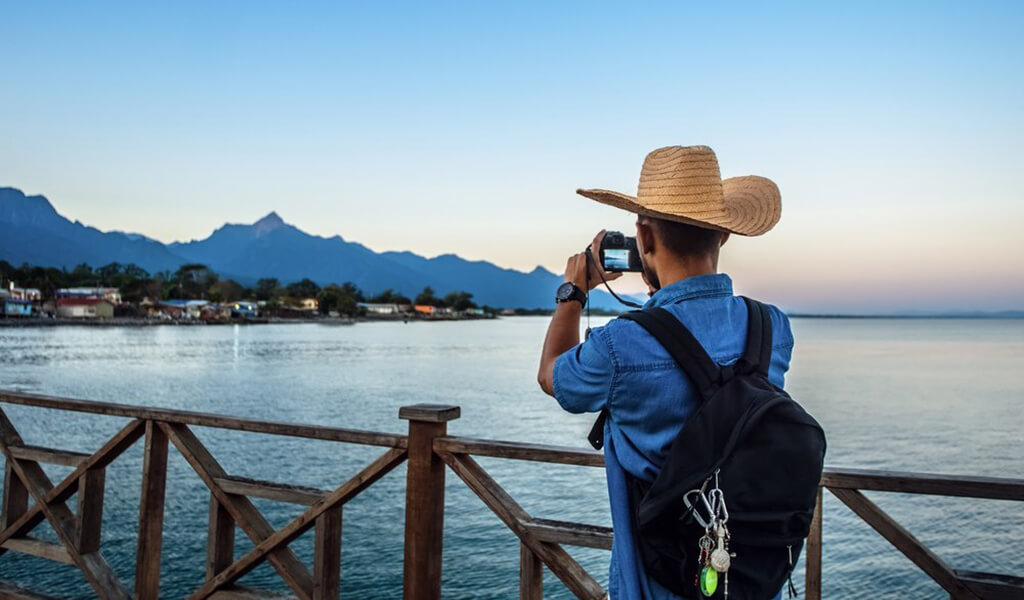
It’s nothing new. People are literally going crazy about travel photography. Why? Well allow me to be captain obvious for a moment and say, “Traveling is FUN!!!” I mean, photography IS about capturing the moment. Although, I’d take a step further and say, “It preserves priceless memories.”
This genre indeed offers a much wider spectrum of subjects to photograph. However, this is solely my personal opinion, those subjects only seem to appear through traveling. So, there IS a difference.
I think so as well. Because, traveling provides photographers with diverse environments and situations, which they then try to conjure up through their camera lenses.
Today, it has become rather easy to get a camera and so people are becoming more interested in this side of photography. In fact, camera devices themselves have become very travel-friendly. You can stand in the snow or a fiery hot desert, and still, your camera wouldn’t falter.
Moreover, digital photography has made the whole deal much simpler and easier. You don’t really need a lot of gear nowadays to embark on a photography expedition across the globe.
When I first began travel photography, I made a lot of mistakes and took many wrong decisions. Sometimes, things became so bad that all the effort I invested in the journey went to waste. But the thing is, I learned a lot.
So, I’ve decided to take the responsibility of becoming your guide and help you with your travel photography as much as possible. I want to provide you with all the travel photography tips that will help to enhance your experience no matter where you go.
You’ll see that some of these tips are pretty basic. And some that’ll give you the confidence to try this genre of photography even if you are only a beginner.
Table of Contents
Before the Trip
It is always best to plan ahead unless you like to go with the flow. However, it can get tricky if you don’t prepare some things beforehand. Let’s discuss what they might be.
Your Gears

Surely, the most important gear, in this case, will be your camera device. It doesn’t necessarily have to be a DSLR; smartphones have now come a long way in taking high-quality photos.
What you need to do is know how your camera works, especially if it’s a DSLR. If you are a beginner, you should definitely have full knowledge of your device. DSLRs have a lot of features that can come in handy during your travels.
Depending on your photography goals, you should make sure you have all the right pieces of equipment. You should learn everything about them as well.
Make sure your camera is working fine and doesn’t require any repairs. You don’t want it to fail when you’re standing in front of some of the most amazing views.
Know about your Destination/s
If you have a destination in mind, try to find out as much about it as is possible. But then it’s not mandatory for you to know every little thing about the location. So, what exactly should you know before you start traveling?
As a photographer, your priority should be places that will offer you good shots. You can search for them on Google, or even on Instagram and Pinterest.
In fact, the latter two might prove to be more helpful to you. These two platforms are almost fully based on photographs. So, they would easily provide you with the right kinds of information.
The reason why you should do this is trying to find the spots after arriving at the destination will be time-consuming and tiring. You may not always get a good internet connection.
Save your Spots
Now that you’ve found out the places you are going to visit, save them. I think the best way to do that is through Google Maps.
This app can be used both online and offline. Of course, you will have to prepare beforehand if you’d need to use Google Maps offline. You can save all your locations and their routes, and then easily look through them later on.
The app is good for a lot of other stuff as well. You can decide your travel plan - which locations to visit first and in what order. You’ll be able to find the time it would take to go from one place to another and the modes of transportation that would suit best.
In short, the app will help you to organize your trip so that you can enjoy the scenery and photograph it without any fuss.
Pack Your Bags Intelligently
Packing for photographers is mostly about their camera and additional equipment. Should you pack everything or just a single thing? You should pack just the right amount.
Depending on the type of camera you use and the style of your photography, you may either need just one device or a number of them.
If there is just one equipment, you are all good to go. But if there’s more, you should use some of the best backpacks that will be easy to carry and convenient while on the road.
The idea is to pack as light as possible. You don’t want to get weighed down by your equipment or your backpack. In fact, you should also pack the type of clothes that will make your travel comfortable.
During the Trip
The previous tips should be enough for beforehand preparations. Now, you are all set to go to your desired location. Let’s embark on a journey.
Get Up Early and Stay Out Late
Sounds a bit crazy, but hear me out. Most of the time we go to places which are tourist hotspots. They all want to visit the best places and have the best experiences. I mean hey, photographers are also part of that group.
That’s why you need to visit the places at an hour when there will be fewer of them. In fact, this practice will help you get the best shots. You wouldn’t have to worry about any unnecessary photo-bombing.
You might be wondering, what if everybody decides to do this. They won’t. From what I’ve seen, even though some tourists do try to go during off-hours, very few of them make use of the early and late hours of the day.
Doing these will also give you some of the best lightings. The sun is always comfortable in the dawn and it will also mean less sweating. The lighting after dusk can be just as good.
Of course, this mostly depends on which type of photos you want to take. Depending on that you may need to go out during the heat and among the tourist crowds. However, you should still try to find out a suitable time for visiting the places. It’s not fun getting bumped into people.
Don’t Rush
Continuing with what I said in the previous section, make no compromise with your shots. We photographers do sometimes need to make the best out of an otherwise crappy photo. But when it’s about travel photography, I recommend a little bit of patience.
After all, you want a photo that truly captures the object’s spirit.
So, if you think there are too many people, or too little, wait a bit until the setting takes a desirable shape. Tourist hotspots don’t always remain jam-packed. If you hang around for a bit the area will clear up.
Take the time for the setting to get ready, as it’s not going to be in your control. You’ll definitely be able to get the shot you’d be proud of. That’s why you should make sure you have ample time to spare. Patience will always pay off.
Make Use of the Angles
When we visit a place after seeing its photo, sometimes we try to get that exact shot. Because the photo we saw before left a mark on us. However, in order to take a remarkable shot, you need to be creative. Otherwise, your work will not be any good, even to you.
A great way to bring out something new out of a commonplace element is to capture it from different, unusual even, angles.
You want to get a shot that will be unique and showcase your individual perspective. So, instead of shooting head-on, move around a bit and capture photos from many different angles.
The best thing about this practice is that you might get to discover a never-before-seen POV. It may look funny to somebody else as you crouch down or roll around with your camera. But the resulting shot will be worth it.
Go Off-Route
I told you in the beginning that you should set up map routes beforehand. But now I’m telling you that you don’t always need to stick to it.
As a photographer, you should always keep your eyes open for something exciting. If something catches your eye, be that on a street that’s not part of your route, you should go ahead and take a shot. I’ve found many remarkable shots in this way.
This doesn’t just apply to roads; it can be a shop, a street vendor, a building at the end of a street. There will always be people if travel portraits are your thing. So, let yourself wander from time to time, but don’t be reckless about it.
Basic Photography Techniques You Should Try
What I like most about the art of photography is that you can do a lot of things by following one particular technique. Some say sticking to the rules is old-school, but I don’t agree with it.
You can do wonders by simply using those rules in your unique way. Your shots should not only express the object but also yourself.
Rule of Thirds

This is one of those basic rules that are said to bring forth outstanding shots, and that’s true. However, you need to do it correctly to make use of it.
The idea is to align the key aspects of the subject following the camera guidelines. At the same time, you don’t need to be very strict in following this rule.
This is where the true fun of photography begins. You can break the rules and still utilize them. It’s sort of like deconstructing the traditional styles and bringing out something new and unique. Feel free to play around with compositions.
In fact, asymmetric shots can turn out really good if you follow the rule of thirds to some extent. The guidelines and their intersection points easily bring attention to elements placed along and over them.
The composition is sure to come out great as long as you do it properly. So, take several shots until you are satisfied with the result.
Make Use of the Frame

Framing your photo is an important step and you should always invest some time into it. It can be very useful in travel photography. You will find a lot of objects to shoot, but they might be bland on their own. That’s where framing comes to your aid.
Before taking a shot, get a good look at the surroundings. Of course, the object can be good on its own, but a frame can heighten the overall composition of your photo.
Normally, it’s recommended not to keep a lot of open area in the foreground of the image. But depending on your shot, you can keep it or fill it up elements from around the subject.
Use your viewfinder to see how much can you put inside the frame, and how much of it you should leave out. You can either fill the whole frame or keep it partially empty. Whatever you do, make sure it’s visually pleasing.
Seek the Details in Things
While you are looking for a frame, you should also try to find out unique details in your surroundings. Sometimes, the detail alone can offer you a good shot. Other times it can add a sense of aesthetics to it.
Such details are always available around you when you are traveling. Like a roadside lamp or a broken flower pot in front of a house. These details help to tell a story that’d otherwise be lost in time.
Have Good Editing Apps at Hand

Editing is very important. Some people do think that photos should remain the way they are captured. But as you keep taking photos you will realize that a little editing can do wonders with the photos.
There is a matter of ethics here, and I hope you’d maintain it. Your goal should be to emphasize the details that are already in the photo. If you choose to enhance it too much, mention it while showing and posting the photo.
That being said, you should have a good editing app ready with you. There are many free apps that can do amazing work. However, from my experience, I can safely say that investing in paid editing tools will be worth every dime. You should begin with lower budget ones and slowly go up if you need to.
Cropping can be very helpful if you do it right. It doesn’t matter whether you use a full-frame or cropped sensor camera. There can always be something in your photo that you can crop, but that’s totally up to you.
Cropping can help the subject/s in the photo to stand out or get a different perspective. In fact, a meh looking photo can become really interesting if you crop it the right way. You just leave out the unimportant things and highlight the key elements in the photo.
Additional Tips
I’m almost done with the important parts of the travel photography tips. I would like to mention a few more things that can be useful to you.
Practice, Practice, and Practice

There is actually no end to learning the art of photography. You will always find new ways to do it. Moreover, you can’t just take one good photo and call it day, and then expect to take an equally good one after a week. You need to practice, not necessarily every day, but regularly.
The more photos you take, the better you’ll get at it. In fact, even when you are traveling, you should consider the experience as practice. The most important thing to learn is how to find the elements that produce noteworthy shots.
To be honest, you don’t even need to understand all the rules. Because at the end of the day, I believe, a good photo is what looks pleasant to the eye. So, practice in order to be able to find those visually pleasant shots.
Don’t Forget to Enjoy the Views
You should always keep in mind that travel photography is all about the experiences. So, if you don’t ever put the camera down, you will simply be taking photos, not traveling. You’ll not get any experience.
First enjoy the experience and then take the photo. Later on, when you will look at them or show them to somebody, you will get to relive that experience. That’s the beauty of this genre of photography.
Don’t forget your Camera
You should always have a camera device with you. You may want to go out for a stroll or to get some food. Even then, you should have a DSLR or Compact camera with you. You never know when something exciting comes up; you don’t want to regret not taking a photo of it later on.
So, do you need to carry your camera and its accessories all the time? No, you just need a device with a camera. The funny thing is, nowadays, we always have a camera with you as it has become an integral part of our cellphone.
Make Sure You Have Backup
As a photographer, you should always have backup no matter where you go. It is basically your life-support and you don’t want to risk it. Cameras are electronic devices and so they need backup all the time.
You may have a dead battery, packed memory card, or in a situation where you can’t keep the camera exposed. These are times when the backup will save your life. Remember I told you to have a proper carrying bag? Well, that’s where all the backup equipment should be stored.
So, what backup should you have? For a start, you should have extra batteries, extra memory cards, and a protective case that would keep your camera safe from adverse weather conditions.
In fact, depending on the place you are visiting you should use a suitable camera and gears.
You should also carry extra power cords and battery chargers or Packs in case the primary ones fail. Having an external hard drive can be helpful too. It will help you to store all your photos in one place.
If You Can, Choose a Suitable Hotel
Most of the time we don’t get a lot of options in choosing our hotels. Our travel budget doesn’t allow us. However, the hotel and its location can be quite helpful.
A hotel with a view can be a good way of getting a kick out of travel photography while staying indoors. You can actually get amazing shots if your room is facing the right direction of the place you are visiting.
Moreover, a hotel that is located centrally or close to important sites can make it easier for you to move about. You can easily access many sites without having to use transports.
Last but not the least
Always be alert and aware of your surroundings. You would be visiting many unknown places and you may not always know the local language. There have been unfortunate incidents with travel photographers in the past, and they still happen.
So, while you are taking in your surroundings you should also remain conscious of any possible danger. Keep your valuables with you but in a way that it can’t be snatched away easily. Also, always keep your personal identification with you.
I don’t mean to scare you; just be careful and have a good time.
